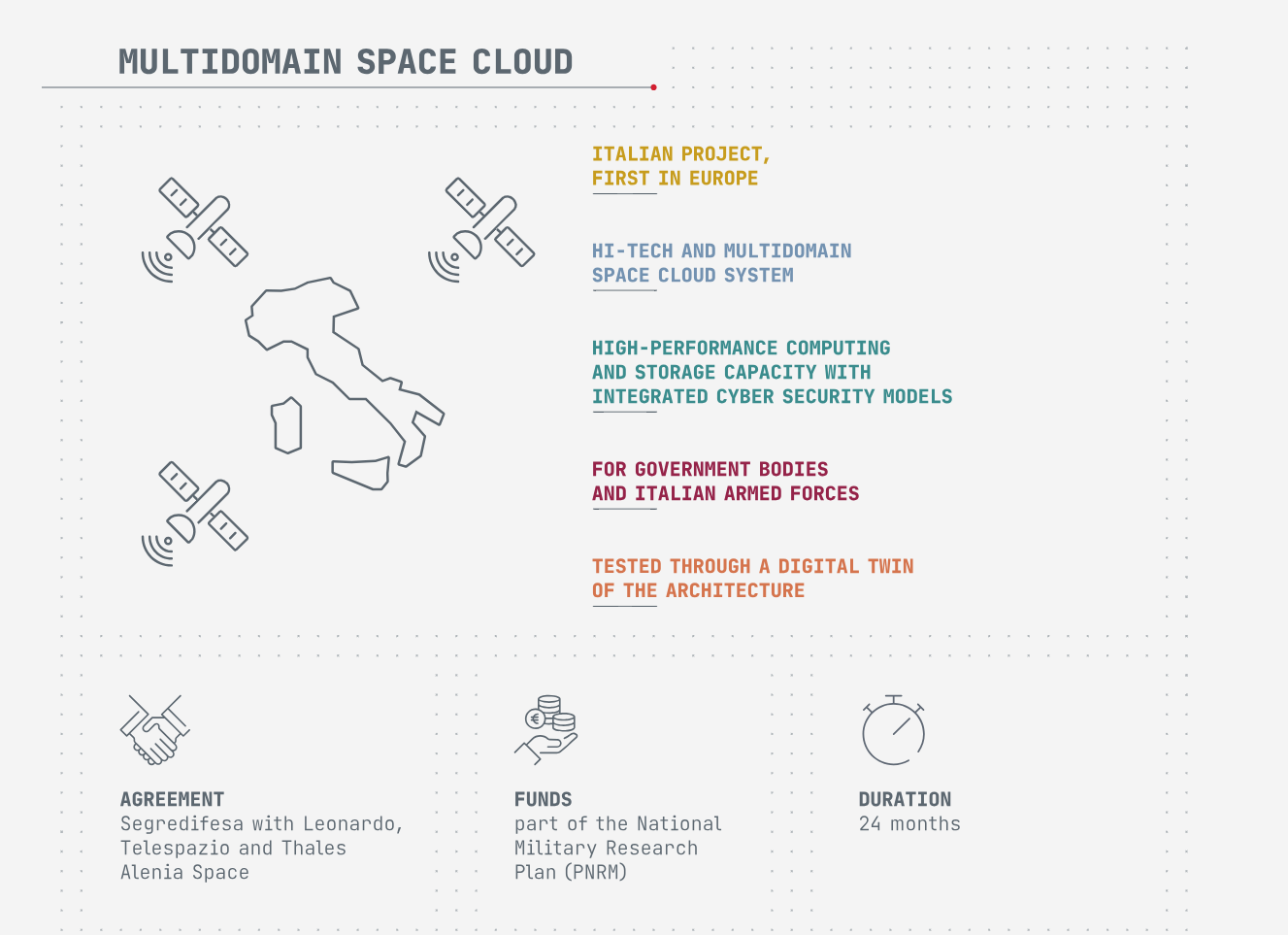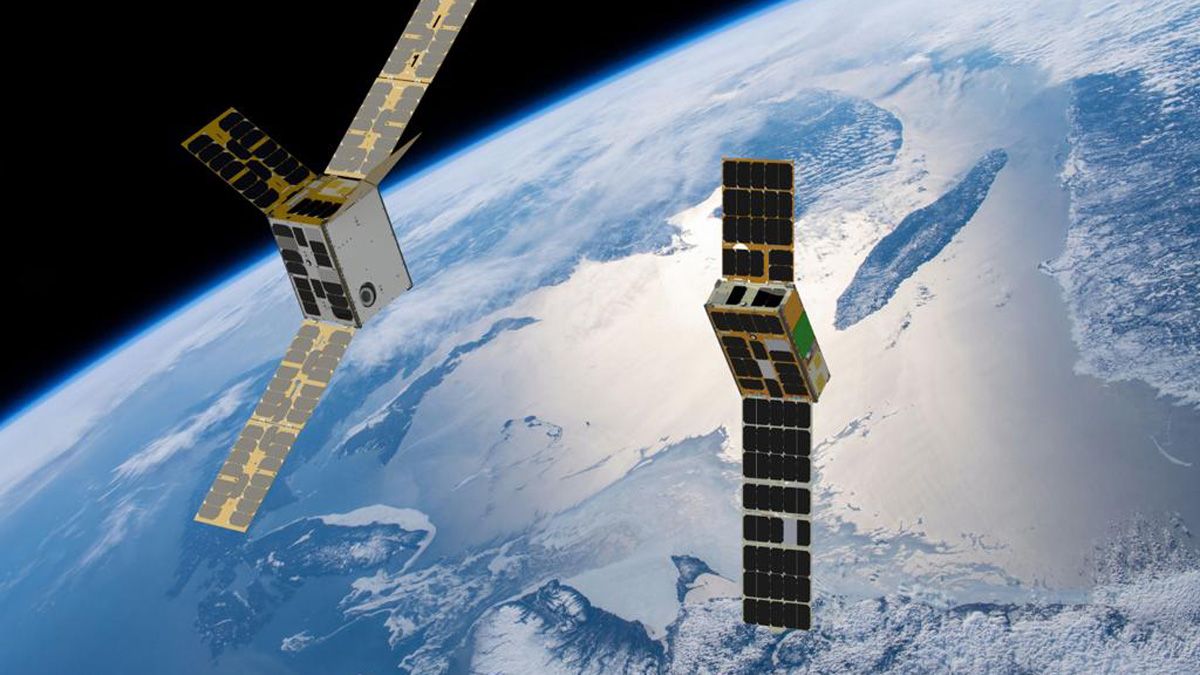Is it a bird? Is it a plane? No, it's an Italian-built constellation of satellites carrying over 100 terabytes of data.
Italy's Ministry of Defense is experimenting with space technology when it comes to cloud and cybersecurity solutions, with Aerospace company Leonardo tasked with defining a space architecture that can deliver high-performance compute and storage capacity off the planet.
The company says the Military Space Cloud Architecture (MILSCA) "study project" will bring together cloud, supercomputing and AI to support digitalization and technological innovation processes for the Italian government and military. One of the main aims of the project is to guarantee greater speed, security and flexibility in the processing and sharing of information.

The Space Cloud, which will be tested by creating a digital twin of the architecture, will be able to store over 100 Terabytes of data generated on Earth and in space onboard each constellation satellite.
The Italian MOD, which is funding the MILSCA project, is banking that a cyber-secure supercomputer and archive system in space will guarantee users access to strategic data such as communication, earth observation, and navigation data even in the most remote locations.
MILSCA will also serve as a backup for Earth-based centers which are exposed to natural disasters.
See also: Cloudflare says hackers stole source code, breached Atlassian and AWS environments
Speaking to The Stack, Nishant Sastry, Director of Research of the Department of Computer Science, University of Surrey, said that the project was "interesting and highly ambitious."
"Having compute in space can be quite useful – for example, many of the images taken for remote imaging and earth observation need not be sent back down to earth, and given that the downlink from satellite to ground can be a bottleneck," he explained.
"Compute capability in space can be used to decide which images to send back, or even to process the images directly in space, minimising the amount of data that needs to be sent down."
Sastry added that there were challenges for the programme though, explaining that beyond a certain height, known as the Van Allen Radiation Belt, the satellites are subject to constant radiation.
This can give rise to arbitrary errors where bits stored can flip from zero to one or vice versa – rendering storage unreadable.
Guarding against such hazards needs “radiation hardening”, which the MILSCA will need to remain cognizant of as it progresses.
Meanwhile in Britannia...
While Italy has been making these moves towards cyber-secure, space based computing, the British Government has released a call for proposals relating to commercially backed space travel.
The government has opened two funding calls worth £15 million as it makes progress towards a potential space mission in partnership with Axiom Space, an American space infrastructure development firm.
The proposal calls - one for science and another for technology demonstrators - are in preparation for the agreement which aims fly a team of four British astronauts, potentially to the International Space Station.
The science call is to support UK-based researchers to design and execute scientific research which uses microgravity and the space environment. The technology demonstrator call is looking for support in the exploration sector to test innovative technologies within a space environment.
As governments propel towards what Sastry terms the "new space paradigm" public-private partnerships look like the way forward.








